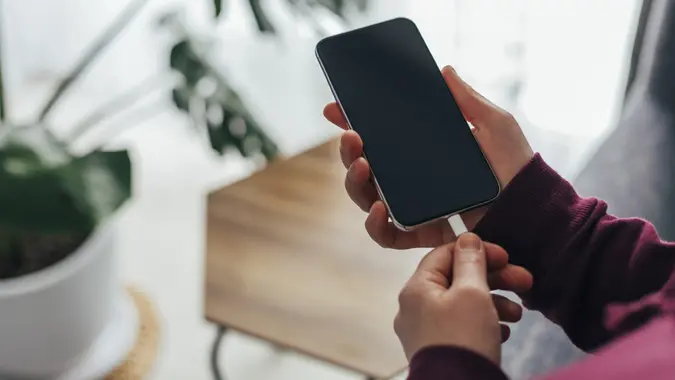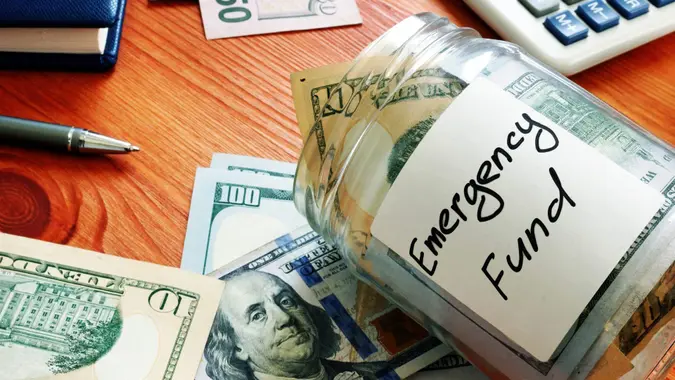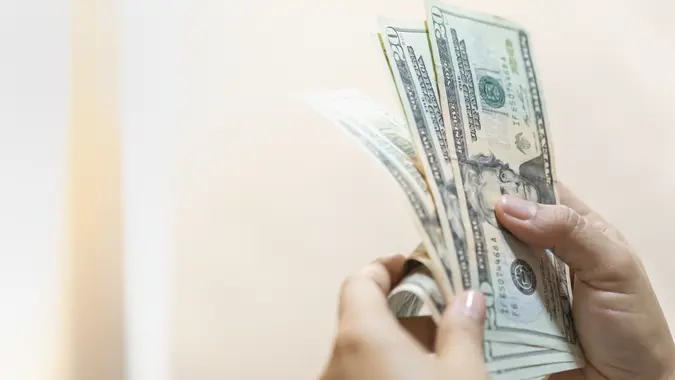What Is ‘Underconsumption’? 5 Ways This Trend Could Save You Thousands in 2025

Commitment to Our Readers
GOBankingRates' editorial team is committed to bringing you unbiased reviews and information. We use data-driven methodologies to evaluate financial products and services - our reviews and ratings are not influenced by advertisers. You can read more about our editorial guidelines and our products and services review methodology.

20 Years
Helping You Live Richer

Reviewed
by Experts

Trusted by
Millions of Readers
Remember Marie Kondo, the queen of de-cluttering? Several years ago, the Japanese professional organizer and consultant captured global attention with her minimalist mantra: Keep only the household items that “spark joy.” As you scroll social media these days, you’ll find that her philosophy is back en vogue — only this time it’s extending far beyond your hallway closet. Now it’s all about cutting back to save big bucks.
TikTokers and other social media creators are embracing “underconsumption,” a philosophy that encourages you to explore all the ways you can reduce what you buy. Some influencers have even coined the term “No Buy 2025” to promote extreme frugality. Embracing underconsumption can help you reduce financial stress, build savings, and simplify your life — and it’s easier than you might think.
1. Choose Reusable Goods Where You Can
Those paper bags at the grocery store may only cost a few cents, but over time, those cents add up. Keep a few reusable bags in your car for planned and impromptu grocery trips. Not only will you save money on paper bags (while avoiding the unfortunate spectacle of being that person whose bag rips while loading the car), but limiting your purchases to what fits in those bags can also curb impulse spending.
You can also repurpose common household items to save money. Repurpose glass jars, plastic takeout containers or yogurt and butter tubs to use as food storage. Beeswax wraps can offer a sustainable alternative to single-use plastic wrap. Instead of cycling through reams of paper towels, cut up old clothes you don’t wear anymore to use as cleaning rags or invest in washable cloth towels.
2. Shop in Your Own Closet
A calendar notification pops up to remind you of an outing you’d completely forgotten about, or maybe you’re simply wanting to upgrade your style without downgrading your credit rating. Skip the fast fashion — it’s often as poorly made as it is inexpensive, not to mention terrible for the environment. Instead, shop in your own closet.
Chances are, you’ll find something you didn’t remember you owned. Experiment by pairing items in new ways to create fresh looks. You just may discover a whole new outfit without spending a dime.
3. Find Free Fun in Your Town
A day or night out doesn’t have to cost a fortune. Many cities and towns across the country offer free or low-cost activities. Spending a cold or rainy day in a museum with free admission can help you expand your mind while protecting your wallet. Sunny days might find you joining a hiking club, attending outdoor events, or enjoying a picnic in a public park with a thermos of homemade coffee.
Your public library can be a treasure trove of free entertainment. Borrow books, movies, and even board games, and attend family-friendly activities like storytimes and workshops, all without spending a dime.
4. Set Parameters Around Your Spending
Listen, you’ve got to eat. And unless you own a fully functioning homestead, you’re going to need to spend at least some money on groceries. That’s where meal planning comes in clutch. Stick to a budget by planning meals in advance and incorporating leftovers into your weekly routine. Shop at budget-friendly stores like Aldi or Lidl, and consider stocking up on canned goods and other non-perishables from discount retailers like Dollar Tree.
When it comes to other expenses, set clear spending limits. If you’ve caught yourself overdoing it on Amazon, delete the app from your phone. Before buying anything that isn’t absolutely necessary, force yourself to wait two or three days to see if the urge passes. If you still need the item, check thrift stores or consignment shops to see if you can find a better deal.
5. Unsubscribe to Marketing Emails
Overspending often begins with a single click. A marketing email rolls in with a snappy subject line, and you think, why not open it? Before you know it, you’re dragging something you don’t really need into your digital cart. Eliminate the temptation by going Marie Kondo on your email inbox and unsubscribing from promotional emails. While you’re at it, clean up your inbox to create a distraction-free zone that sparks joy.
More From GOBankingRates
 Written by
Written by  Edited by
Edited by 
























